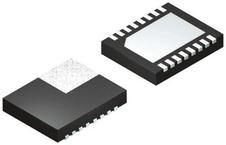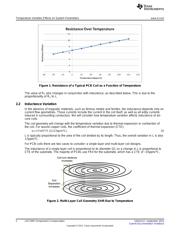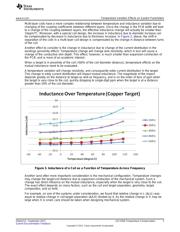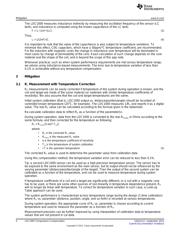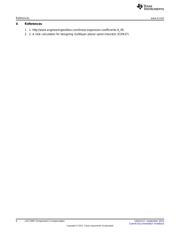šłčŤĹĹ

Application Report
SNAA212‚ÄďSeptember 2013
LDC1000 Temperature Compensation
EvgenyFomin
ABSTRACT
LDC1000 is a high-precision Inductance-to-Digital converter with internal precision of 0.1% over dynamic
range. However, other factors may influence measurement precision greatly, dominating the system
performance. One of these is temperature variation.
This App Note will discuss the physical effects of temperature variation on inductive sensing and provide
methods to mitigate these effects.
Contents
1 Introduction .................................................................................................................. 1
2 Temperature Variation Effects on System Parameters ................................................................ 1
2.1 R
P
Variation .......................................................................................................... 1
2.2 Inductance Variation ............................................................................................... 2
3 Mitigation ..................................................................................................................... 4
3.1 R
P
Measurement with Temperature Correction ................................................................ 4
3.2 Multi-Coil Design ................................................................................................... 5
4 References ................................................................................................................... 6
1 Introduction
The LDC1000 precisely measures the characteristics of a sensor (LC oscillator) to detect the presence of
a conductive target. The characteristics of the coil need to be suited to the specific application, and any
changes in the coil will affect the measurement sensitivity and accuracy. Shifts in the operating
temperature of the system may need to be considered for the impact on some applications.
2 Temperature Variation Effects on System Parameters
Inductive sensing is based on measuring the variation of inductance, L, and resonance impedance, R
P
of
the sensor coil. Both of these parameters can be sensitive to temperature on coil design, material, and
operating conditions. Temperature-induced effects in R
P
are mainly due to temperature coefficients of the
coil and target materials. Temperature-induced effects in L are a result of the temperature coefficient
expansion of the coil structure. These effects are generally much smaller in magnitude. Therefore,
measurements based on L are less sensitive to temperature variations.
2.1 R
P
Variation
The parallel resistance of the LC circuit, R
P
, is one of the parameters measured by the LDC1000. R
P
is
based on the following formula:
R
P
= L / (Rs * C)
where
‚ÄĘ L is inductance
‚ÄĘ R
S
is equivalent series resistance of LC tank
‚ÄĘ C is the capacitance of the LC tank. (1)
The dominant factor is the change of resistivity of the coil and target. Copper has a resistive temperature
coefficient of 0.39%/¬įC (3900ppm/¬įC). Many other metals have a similar value.
1
SNAA212‚ÄďSeptember 2013 LDC1000 Temperature Compensation
Submit Documentation Feedback
Copyright © 2013, Texas Instruments Incorporated

